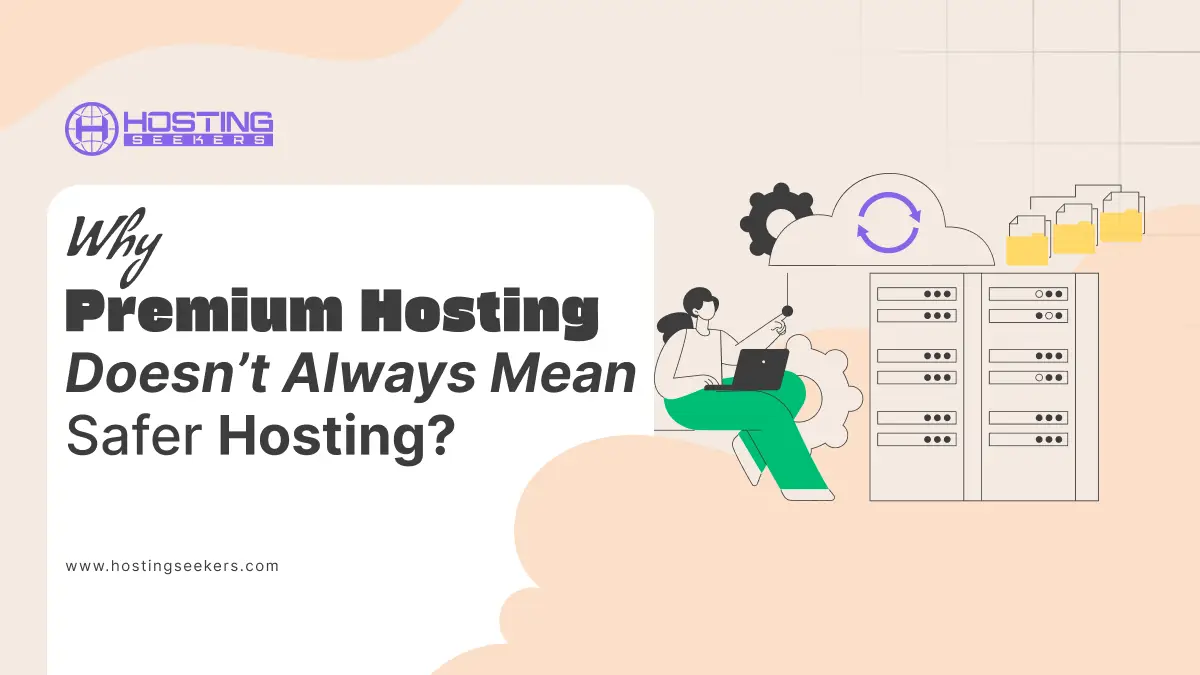
Why Premium Hosting Doesn’t Always Mean Safer Hosting?
Web Hosting Tips Updated on : July 2, 2025High-quality web hosting is often advertised as the best for speed, dependability, and security. Entrepreneurs, beginners, and software designers tend to think this way: increase the price, receive better quality in the form of a faster server, a longer period without website downtime, and enhanced security. But reality is more nuanced.
Security hosting is a layered game, and while premium providers may check some boxes, “Premium” doesn’t guarantee invulnerability. Certain assumptions about top-tier hosting can lead to dangerous oversights.
Premium Features Don’t Replace Security Architecture
Premium hosting often comes with faster hardware, SSD storage, global CDNs, and more CPU headroom. These are great for performance, but they don’t necessarily strengthen your application’s security posture.
Security isn’t a built-in byproduct of higher-tier service—it’s a parallel discipline. A managed VPS or dedicated server may offer more control, but with that comes increased responsibility. Without correctly configured firewalls, updated software stacks, and access policies, even a premium setup becomes just as vulnerable as a $5 shared server. This is particularly problematic when clients assume that the price correlates with automatic hardening. It doesn’t.
A False Sense of Safety Can Be Exploited
The illusion of safety can be more dangerous than the obvious risk. Many users assume that top-tier hosting plans come with airtight protection. But viruses and exploits don’t discriminate based on monthly billing cycles.
Some of the most dangerous viruses specifically target misconfigured or overprivileged environments, which are often found in VPS and dedicated server setups, both of which are common in premium plans.
Unlike shared hosting, which tends to be more restrictive, premium environments provide users with root or sudo access. That means a poorly secured CMS, exposed database port, or neglected backup script can become an attack vector.
Once inside, these threats can operate undetected because the user and even the hosting provider assume the system is inherently more protected.
Not All Premium Hosts Prioritize Security the Same Way
Security isn’t a regulated or standardized feature in web hosting. One provider’s “security suite” might include real-time malware scanning and DDoS mitigation, while another might be little more than a basic firewall and a checkbox for “auto-updates.”
Often, “Premium” refers to server specifications and customer support, rather than any hardened infrastructure. Providers might outsource actual threat detection to third-party tools like Imunify360, which may or may not be actively monitored or properly configured.
Additionally, the level of isolation between client accounts varies. Some premium hosts run multiple customer containers on the same physical server, which means one compromised account can still affect others through kernel-level exploits if isolation isn’t rigorously maintained.
Performance Optimization Can Introduce New Attack Surfaces
Many premium hosts offer server-side caching, pre-installed performance plugins, and custom control panels. These optimizations reduce load times but also introduce complexity—each one being another surface area for attack if not regularly patched or reviewed.
For example, caching systems that store sensitive data in memory or on disk can leak information if permissions aren’t tightly configured. Custom dashboards often skip updates for extended periods because they require bespoke maintenance. Even a misconfigured CDN rule can expose original IP addresses and bypass WAF protection.
These are subtle gaps that are often overlooked during onboarding or when migrating from shared hosting. Ironically, the very features customers pay for might expand the attack surface if not proactively managed.
Customer Support & Security Expertise
Premium hosting often comes with 24/7 customer support. However, not all support teams are trained in information security best practices. While they can help reboot a server or restore a backup, diagnosing a zero-day exploit or identifying suspicious cron activity might be beyond their scope.
Some premium providers will even restore infected backups if the incident isn’t caught in time, potentially reintroducing malware into your environment. Worse, providers sometimes hesitate to get deeply involved in “application-level” security, leaving issues like vulnerable WordPress plugins or exposed APIs entirely in your hands.
The “you’re paying more, so we’ve got it covered” mindset doesn’t always align with reality.
Security Requires Proactivity—Not Just Payment
Regardless of the tier, the truth is that security is a process, not a product. While premium hosting provides more tools and better infrastructure, it does not eliminate the need for regular audits, access control reviews, software patching, and threat monitoring.
Smart users treat premium plans as a foundation, not a fortress.
If you’re investing in premium hosting, pair it with:
- Endpoint scanning tools and WAF rules that you configure yourself.
- Secure SSH key management and two-factor authentication.
- Daily external backups are stored off-site.
- Web application vulnerability scanners (like Nikto or OWASP ZAP)
Final Thoughts
The label “premium” implies higher quality, and in many respects, performance, uptime, and customer service it delivers. But when it comes to security, that label can be misleading. The infrastructure may be stronger, but the defenses are only as solid as the configurations and habits of the people who manage it. Security isn’t a status upgrade. It’s a strategy. Choose wisely!




